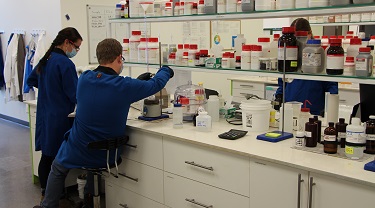Canada’s job market was hot in January. The unemployment rate was at its lowest level in 46 years. Businesses were complaining not just about lack of skilled labour, but lack of any labour at all. That all changed overnight with COVID-19. And we weren’t alone—the panic was shared south of the border and across Europe. Emerging markets were also trying to stem the bleed. No place was spared the pandemic’s job-slashing ravages, or the media’s persistent portraying of the personal plight of its victims.
In just two short months, Canada lost three million jobs, more than 15% of the pre-pandemic work force. For the speed or magnitude of the loss, this episode has no peer in the past three recessions—by all possible measures, this was an instant and devastating blow. No industry or region was spared.
Thankfully, for many, the episode was short. April and May were the trough months, but since then, 2.3 million of the jobs are back. While that’s a rapid improvement that is again, very unlike the standard sluggish post-recession rebound, it still leaves 720,000 wondering when they are going to be back at it. From a low of 5.5% in January, the unemployment rate is still way up at 9%, having just slipped below double digits in September.
Improvement is expected to continue, but the recent rise in second-wave infections is expected to slow the progress. Rebound will also be inhibited by the different effects COVID-19 is having by industry. Among those slow to rehire are the accommodation and food services sector, agriculture, construction and transportation.
Even so, some sectors are in the “100-Club” already, that is, those that are back to full pre-pandemic employment. Utilities and education services are both well above 100%. Finance and insurance, professional, scientific and technical services, and also manufacturing, are all at or very close to the 100% mark.
Part-timers are getting their jobs back faster than full-time workers, but only just. They had reached 98% of pre-COVID-19 employment by September. At the same time, full-timers are at 96%, having added 609,000 positions since May.
In all the turbulence, Canadian workers remain hopeful. A good part of the stubbornly high unemployment rate is that labour force participation is strong: back to 99.2% of pre-COVID-19 levels. Potential workers are actively looking, likely encouraged by the rapid rebound in hiring.
How are we doing against others? Stateside, things aren’t as bright. Of the 22 million jobs lost in the United States, only 11 million are back. There, the unemployment rate is down to 7.9%, but labour force participation has only recovered one-third of its pandemic-related loss: there’s a higher level of discouragement.
Sectoral results are also very different from Canada’s. Losses are pretty evenly split between the goods and service sectors, with both recovering just over half of their pre-COVID-19 job counts. Manufacturing lags well behind Canada’s experience, marginally over the halfway-back mark, and suggesting possible near-term supply chain issues. On the other hand, retailing and construction have pulled well ahead of the U.S. average, signalling the good times in those industries.
Full economic recovery awaits the return to pre-pandemic employment. Until then, the incomes lost to the economy will continue to require gap-filling stimulus funds, and will weigh on overall demand. How soon will we get there? Well, first employment lags behind GDP growth, so businesses will wait until they’re convinced that growth is here to stay. Moreover, hard-hit sectors, like aerospace, energy, tourism-related businesses and more analog enterprises, aren’t expected to rebound quickly, and won’t be in a rehiring mood for a while.
While we wait for the full return, a note of hope: In Canada, there were 18.5 million jobs drawing a paycheque. In the U.S., the number is 142 million. Especially encouraging is that these all have less to spend on, and the extra cash is piling up in demand deposits at banks—to the tune of $217 billion in Canada, and $2.2 trillion in the U.S., a significant share of annual GDP in both cases. This represents a huge source of private stimulus for the economy when we’re all able to spend more normally.
The bottom line?
Job losses were a megashock to the world and Canadian economies in March and April. The speed of the initial return to work was also dramatic, if partial. Given pre-pandemic talent shortage, companies have lots of incentive to bring workers back as soon as they can, and fish around for others who are at a loose end. Those who can’t move immediately may live to regret it.
This commentary is presented for informational purposes only. It’s not intended to be a comprehensive or detailed statement on any subject and no representations or warranties, express or implied, are made as to its accuracy, timeliness or completeness. Nothing in this commentary is intended to provide financial, legal, accounting or tax advice nor should it be relied upon. EDC nor the author is liable whatsoever for any loss or damage caused by, or resulting from, any use of or any inaccuracies, errors or omissions in the information provided.






